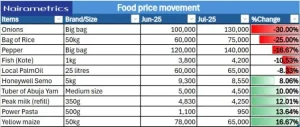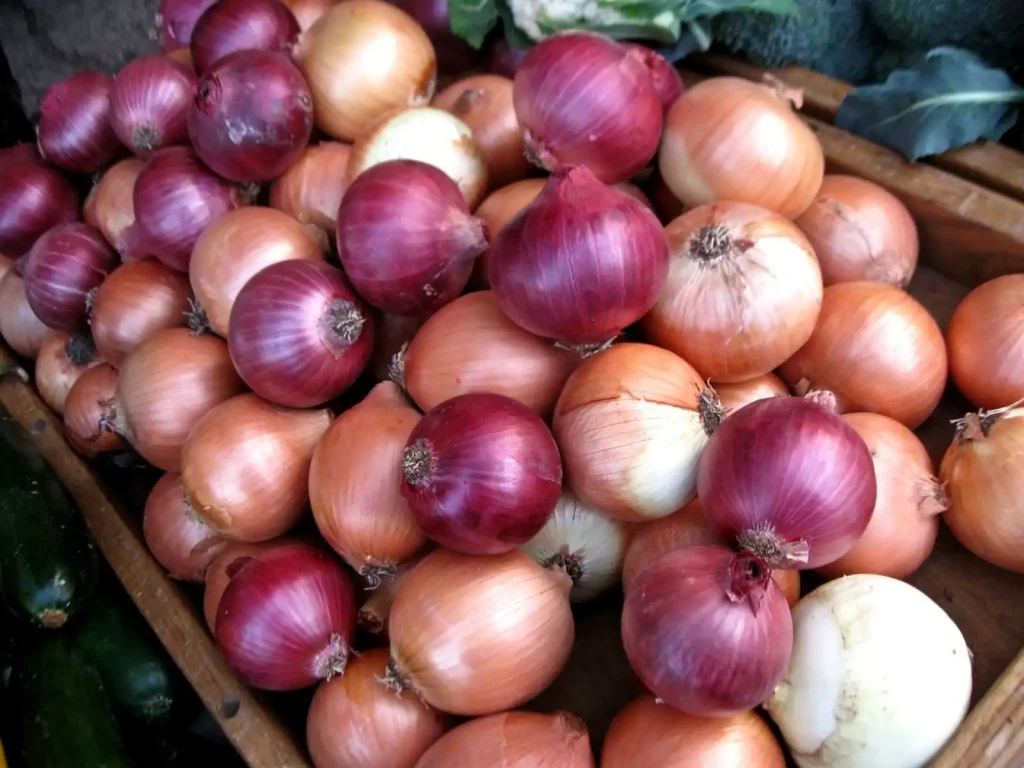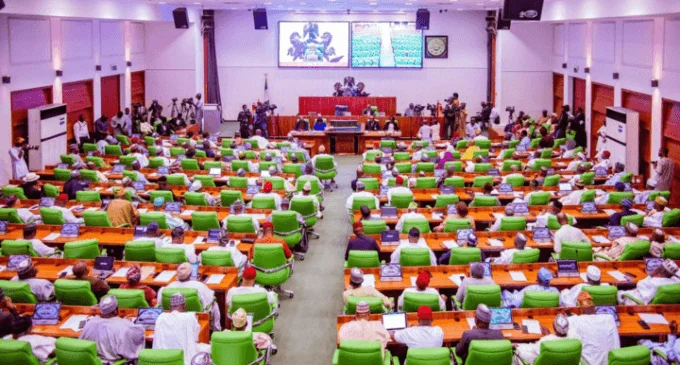Lagos residents experienced another difficult month in July 2025 as food prices surged across key markets in the state. Shoppers at Mushin, Mile 12, Daleko, and Oyingbo were hit hardest by a sharp rise in the prices of essential food items, particularly onions, rice, and pepper. These increases, recorded in the latest monthly market survey, have added to the economic burden of already struggling households.
While a few items saw marginal declines thanks to seasonal harvests, the overall trend showed significant inflationary pressure. Traders and consumers alike pointed to transportation disruptions, currency depreciation, and poor infrastructure as root causes of the continued rise in food costs.
Onions, Rice, and Pepper Drive the Price Hike
Among the hardest-hit items, dry onions recorded the steepest monthly increase. The price of a big bag soared by 30%, moving from ₦100,000 in June to ₦130,000 in July. Traders attributed the price hike to multiple factors, including seasonal scarcity, deteriorating roads, skyrocketing transport costs from the northern regions, and higher storage expenses. These combined pressures disrupted supply and inflated retail prices significantly.
Rice, another staple in Nigerian households, also witnessed a substantial jump. A 50-kilogram bag of popular local rice brands like Mama Gold rose by 25%, climbing from ₦60,000 in June to ₦75,000 in July. Market sellers reported that the continued fall in the naira’s value, rising import duties, and logistic challenges were pushing both local and imported rice beyond the reach of many families.
Similarly, pepper prices rebounded sharply after previous declines. A big bag of pepper increased by 16.67%, selling at ₦140,000, while a medium-sized bag rose by 15.38% to ₦75,000. Traders said weather conditions in the North and disrupted supply routes were behind the sudden spike, reversing gains made earlier in the year.

Frozen Fish, Beans, and Cooking Gas Also Climb
Several other household necessities didn’t escape the July price surge. Frozen fish, a key protein source for many families, saw significant increases:
-
Kote fish rose by 10.53%, from ₦3,800 to ₦4,200 per kilogram.
-
Titus fish followed with a 7.69% increase, from ₦6,500 to ₦7,000.
Similarly, the price of a 25-litre keg of local palm oil climbed by 8.33%, now averaging ₦65,000 compared to ₦60,000 last month.
Carbohydrate staples like white garri also saw an uptick. A 50-kg bag of garri rose 7.14% to ₦45,000 from ₦42,000. Meanwhile, brown beans increased by 5.88% to ₦90,000, and oloyin beans went up by 4% to ₦78,000.
Even cooking gas became more expensive. The cost of refilling a 12.5-kg cylinder rose by 5.45%, now averaging ₦14,500. Rising energy prices and distribution costs continue to push household utility expenses higher.
Seasonal Harvests Offer Some Relief
Despite the general inflation trend, a few food items saw modest price drops, primarily due to ongoing harvests from northern and central Nigerian states like Niger, Kaduna, and Plateau.
Yellow maize recorded the most notable decline, with prices falling by 16.67%. A 50-kg bag dropped from ₦78,000 in June to ₦65,000 in July. Traders attributed this to fresh maize harvests that improved supply temporarily.
Other price drops included:
-
Power Pasta (per pack): down 13.64%, from ₦1,100 to ₦950.
-
Peak Refill Milk (500g/360g): declined by 12.01%, now averaging ₦4,250.
-
Abuja yam tubers (medium): fell by 10% to ₦4,500.
-
Large yam tubers: dropped 6.67%, now selling at ₦7,000.
-
Honeywell semo (5kg): reduced by 8.06%, now ₦8,550.
-
Olaola Poundo (2.267kg): went down 7.41%, priced at ₦27,000.
Although these reductions offered temporary relief, many Lagosians expressed skepticism about their sustainability, given past experiences with short-lived price corrections.
Voices from the Market: Frustration and Fatigue
Market participants echoed frustration over the volatility of food prices and its effect on livelihoods. At Oyingbo Market, a grain trader named Bisi explained the situation bluntly:
“The cost of bringing maize from the North has dropped a bit this month, but pepper is another story entirely.”
At Daleko Market, a rice wholesaler named Chinedu lamented that rising transport and fuel expenses were eating into their profits:
“The customer thinks we’re enjoying this price hike, but fuel and transport are eating us alive.”
At Mushin Market, Mrs. Akinbami, a regular shopper, voiced her dismay:
“Rice is a staple in my house, and now it’s increased in price. Every month, it feels like we’re budgeting for luxury, not food.”
Meanwhile, the 30% jump in onion prices drew sharp criticism from food vendors. Mrs. Kudirat Shobowale, a caterer at Mile 12, described the impact on her business:
“Onions are no longer affordable. A single sack is now ₦130,000—that’s more than my monthly profit. I had to reduce how much I use in my soup. Customers are already complaining about the taste.”
Shoppers Appreciate Some Relief but Remain Cautious
Despite the overwhelming trend of rising prices, some consumers were able to benefit from the decline in maize, yam, and pasta.
At Oyingbo, Mrs. Ngozi, a buyer, noted:
“I bought yams cheaper this week, and at least now I can make porridge again.”
At Mushin Market, Mrs. Juliet Nweke shared:
“I noticed pasta came down this month—₦950 is better than ₦1,100. I bought a few extra packs for my children.”
For budget-conscious individuals like Mr. Adebayo Hassan, a student, the drop in pasta price was significant:
“As a student on a tight budget, cheaper pasta makes a difference. It’s my go-to meal, so I stocked up.”
However, not everyone believed the relief would last. Mrs. Omolola Adeniran, shopping at Mile 12, warned:
“This is how they do—reduce pasta price this month and increase it again next month. I just bought what I could afford and moved on.”
Broader Implications for Inflation and Policy
The sharp increase in Lagos food prices during July may worsen Nigeria’s overall food inflation trajectory. According to data from the National Bureau of Statistics, food inflation rose to 21.97% in June 2025, up from 21.14% in May. The agency reported that Lagos experienced a significant spike in June, with food inflation rising to 21.7% from 15.1% in May.
If similar trends continue in other states, July’s national food inflation figure may climb even higher. Persistent transportation challenges, poor infrastructure, and weakening currency conditions make it difficult for food prices to stabilize in the short term.
Conclusion: Urgent Solutions Needed
July 2025 has brought more economic hardship for families across Lagos. With onions, rice, and pepper surging in price and other essentials following suit, many households are struggling to afford daily meals. While seasonal drops in yam, maize, and pasta prices provided slight relief, uncertainty remains about how long those declines will last.
Unless meaningful policy measures are implemented—such as improving transport networks, supporting local agriculture, and curbing inflation through currency stabilization—Nigerians will continue to bear the brunt of a volatile food economy.
With food inflation reaching record levels and market volatility continuing to challenge both traders and consumers, the call for sustainable solutions is louder than ever.













